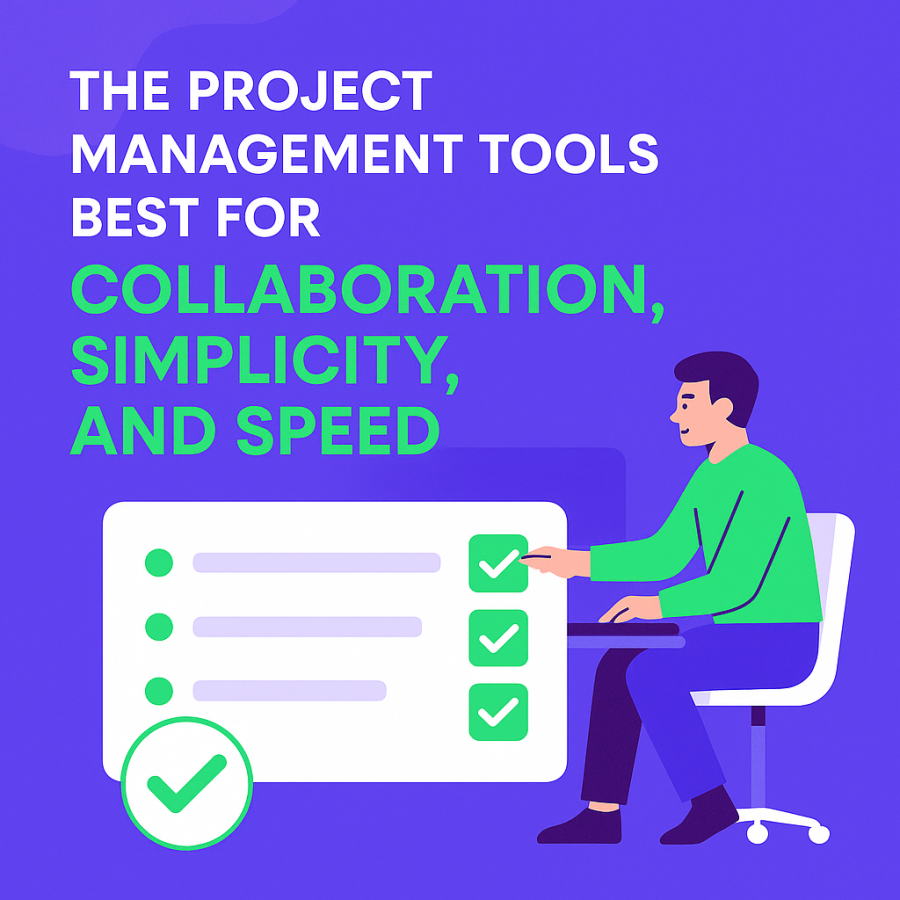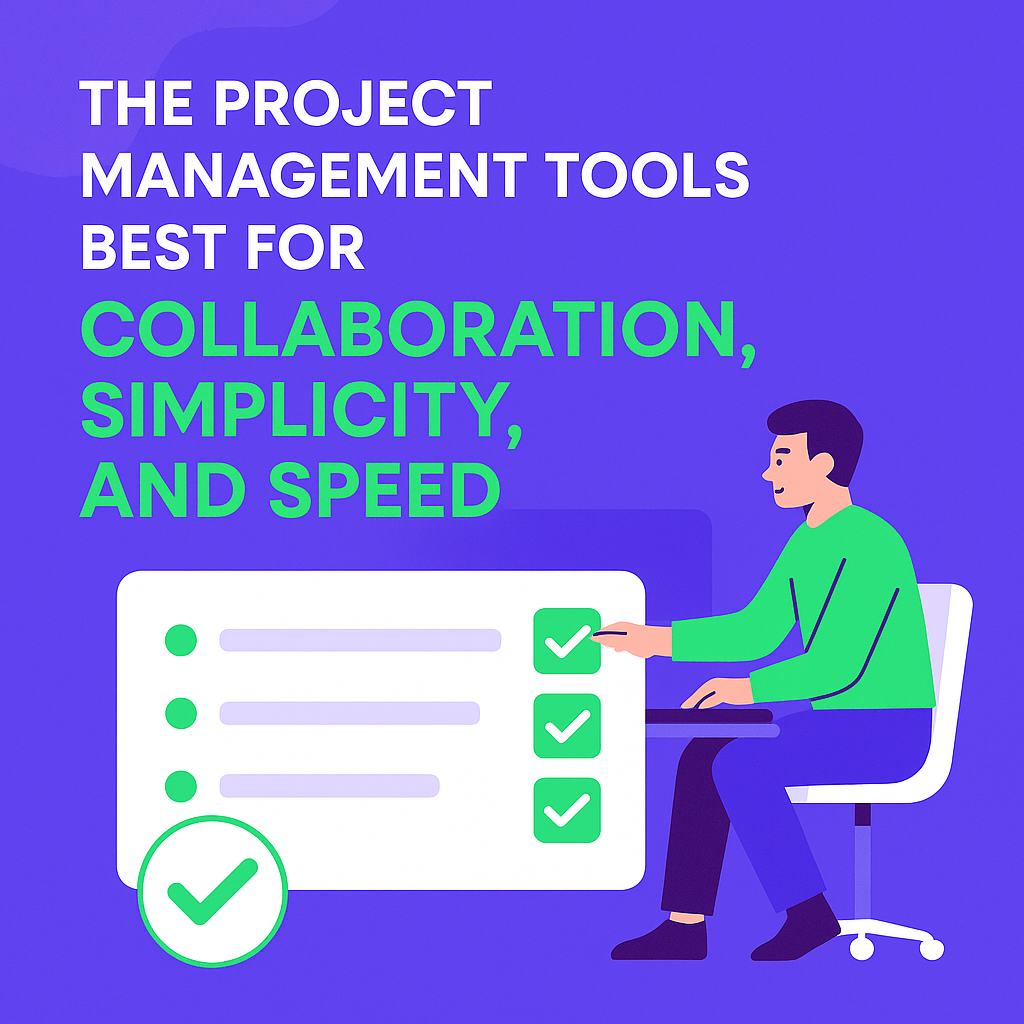Introduction
In an increasingly digital, distributed, and fast-paced world, the tools we choose to manage our projects can be the difference between success and stagnation. Whether you are coordinating a university research project, launching a student startup, or managing tasks across departments, efficient project management tools have become essential to streamline collaboration, maintain simplicity, and accelerate workflows.
Today’s best project management tools are no longer reserved for Fortune 500 companies. With the explosion of cloud computing and SaaS platforms, these tools are now accessible, affordable, and even free in many cases. However, not all tools are built alike. Some are bloated with features that deter non-technical users. Others prioritize sleek interfaces but fall short on functionality. A select few strike the right balance between collaboration, simplicity, and speed.
In this feature, we explore the top tools that shine in these three crucial dimensions, with a special focus on Artavolo, a rising platform built to challenge the dominance of traditional spreadsheets and complex project management systems.
Why Collaboration, Simplicity, and Speed Matter
Project management, at its core, is about turning ideas into outcomes. The tools we use should foster, not hinder, this transformation. Here’s why each of these pillars matters:
1. Collaboration
Modern projects are rarely solo endeavors. From student group assignments to global product launches, teams need to work together—often asynchronously and remotely. Tools must provide real-time collaboration, commenting, sharing, and visibility to support effective teamwork.
2. Simplicity
Project management tools should not require a training manual. The most effective tools are intuitive enough for a first-time user yet powerful enough for complex workflows. Simplicity reduces onboarding time and encourages adoption across a wide range of users, including non-project managers.
3. Speed
In the race to meet deadlines, speed is critical. Teams need to create tasks, assign roles, visualize progress, and adjust plans on the fly. Laggy interfaces or feature overload can slow everything down. The best tools are fast, responsive, and make project management feel effortless.
The Contenders: Project Management Tools Worth Knowing
Let’s dive into the tools that deliver on all three fronts. These platforms have been evaluated not only for their popularity but for how well they serve real teams in education, startups, and beyond.
1. Artavolo – The New Era of Table-Based Project Management
Website: artavolo.com
Best For: Teams who love the simplicity of spreadsheets but crave smart collaboration and AI-enhanced productivity.
Overview:
Artavolo is a project management tool built around the concept of "tables"—where ideas, data, and tasks live together in harmony. Unlike traditional project management apps that rely heavily on kanban boards or Gantt charts, Artavolo starts with the table as the core unit of productivity. This approach is intuitive for spreadsheet users but layered with features that go far beyond rows and columns.
Key Features:
-
Smart Grid Editor: Turn any table cell into a rich text field, embed notes, and add status tags, priority, deadlines, or assigned users directly in cells.
-
AI Integration: Generate, summarize, and translate text using built-in AI, just like a writing assistant.
-
Inline Task Creation: Create tasks inside documents or grids without leaving your workflow.
-
Multiple Views: Switch between table view, kanban view, calendar, and timeline effortlessly.
-
Real-time Collaboration: Collaborate with classmates or colleagues in real-time, with change tracking and task mentions.
-
No Learning Curve: Designed to be easy for spreadsheet lovers, without the complexity of legacy project management systems.
What Makes Artavolo Stand Out:
Artavolo shines in its ability to fuse spreadsheet simplicity with powerful task management. The Smart.Editor makes even casual notes a space for collaboration and action. It’s ideal for academic teams, startups, and anyone tired of bloated project management software.
2. Trello – Visual Simplicity with Kanban Focus
Best For: Individuals or teams who prefer visual task organization.
Overview:
Trello is a widely used kanban-based project management tool that uses boards, lists, and cards to organize tasks. It’s particularly popular with students, creative teams, and agile developers.
Key Features:
-
Drag-and-drop cards across columns
-
Task comments, file attachments, and due dates
-
Power-ups for automation and integrations
-
Mobile apps for collaboration on the go
Pros:
-
Extremely easy to use
-
Great for task visualization
-
Free tier is generous
Cons:
-
Can become unwieldy for large projects
-
Lack of native time tracking or deep reporting
3. Asana – Task-Centric Project Management
Best For: Teams looking for structured task assignment and timelines.
Overview:
Asana is a mature platform that supports multiple project views including list, board, calendar, and Gantt. It’s great for teams that need structure but still want intuitive workflows.
Key Features:
-
Task hierarchy: subtasks, dependencies, milestones
-
Timeline view for project planning
-
Team and project dashboards
-
Robust integrations
Pros:
-
Highly customizable
-
Great for complex projects
-
Automation options available
Cons:
-
Steeper learning curve than Trello or Artavolo
-
May feel too "corporate" for informal teams
4. ClickUp – The All-in-One Approach
Best For: Teams that want every feature imaginable under one roof.
Overview:
ClickUp combines tasks, docs, goals, whiteboards, and dashboards into a single platform. It’s built for power users who want customization above all.
Key Features:
-
Dozens of view types (table, kanban, Gantt, calendar, mind map)
-
Built-in time tracking
-
Docs with real-time collaboration
-
AI assistant for task descriptions and updates
Pros:
-
Extremely flexible
-
Great for teams managing multiple workflows
-
Competitive pricing
Cons:
-
Feature overload can be overwhelming
-
UI feels cluttered for new users
5. Notion – Notes, Docs, and Projects Unified
Best For: Teams who blend note-taking and project planning.
Overview:
Notion started as a note-taking tool but evolved into a hybrid workspace. It lets users create databases, boards, calendars, and docs inside a flexible page-based environment.
Key Features:
-
Wiki-style documentation
-
Relational databases
-
Kanban boards, timelines, calendars
-
Deep customization with templates
Pros:
-
Unified workspace for knowledge and projects
-
Beautiful design
-
Popular among students and educators
Cons:
-
Less intuitive for structured project tracking
-
Real-time collaboration can lag on large pages
Among the tools covered, Artavolo presents a compelling case for students, researchers, and agile teams who want:
-
The freedom of a spreadsheet
-
The intelligence of AI-enhanced text and task generation
-
The collaborative features of a real-time platform
-
And the simplicity to get started without training
What makes Artavolo exciting is its laser-focus on turning every piece of content into actionable work. A note becomes a task. A comment becomes an assignment. A table becomes a project. And it all happens without the friction that plagues most enterprise tools.
In a world where attention spans are short and productivity demands are high, tools like Artavolo offer the clarity and speed that students and professionals alike need.
Choosing What Works for You
There’s no one-size-fits-all when it comes to project management tools. The best choice depends on:
-
Your team’s size and technical skills
-
The complexity of your workflows
-
Your preference for visual vs. tabular layouts
-
Your need for integrations, reporting, or automation
For those in university environments—balancing coursework, research, extracurriculars, and personal projects—tools like Artavolo offer a perfect blend of simplicity, structure, and speed.
Whether you're a computer science student managing a capstone project, an arts major running an online publication, or a startup founder pitching your MVP, the right project management tool can empower your vision.

